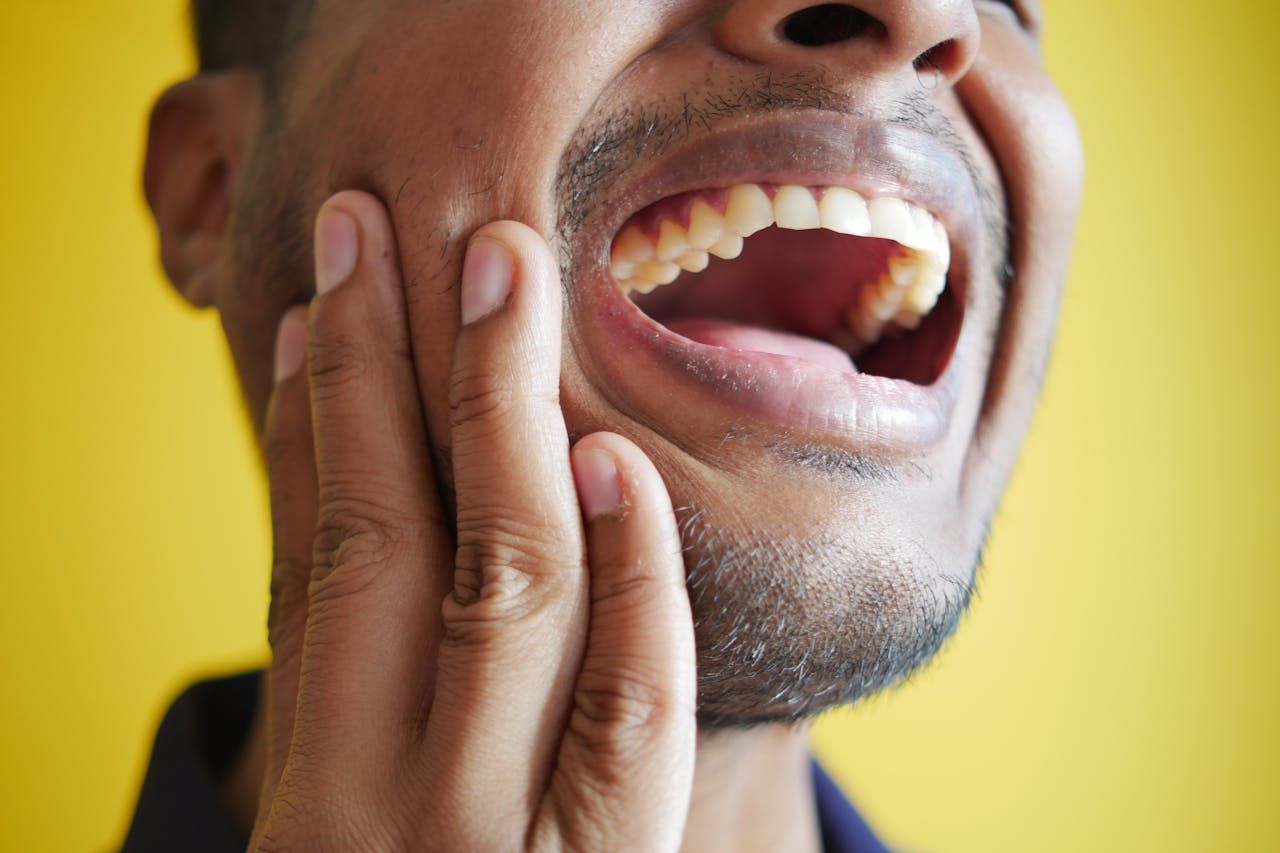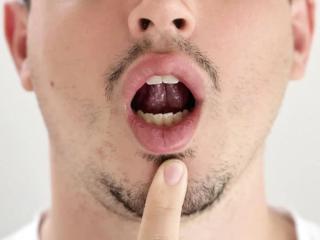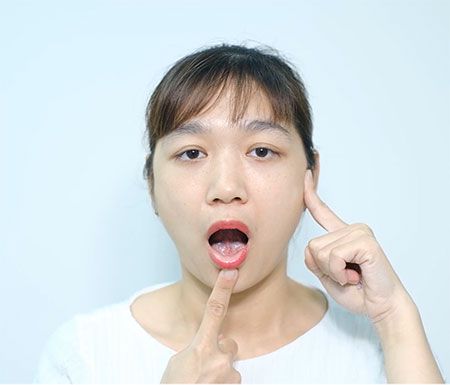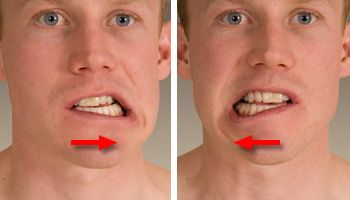Easy Exercises for Temporomandibular Joint (TMJ) Pain Relief

Did you know that around 5 to 12% of adults have some form of temporomandibular joint (TMJ) problems?
This joint is one of the most important in our bodies. It connects the skull and lower jaw, allowing you to eat and talk, among other critical functions. So, if you’re experiencing pain or discomfort, it’s time to do something about it.
TMJ stretches can relieve pain from home. Here’s a quick guide to the best exercises for TMJ.
Best Stretches To Relieve TMJ Pain
TMJ can be caused by a range of factors, including biological, psychological (stress), and social causes (Kapos et al., 2020). However, you can tackle this problem at home with the best TMJ exercises to relieve pain.
Below, you’ll find the eight best stretches to ease discomfort and manage TMJ health.
1. Relaxed Jaw Exercise
Learning to relax your jaw muscles can really help with TMJ pain.
Gently open and close your mouth, keeping teeth apart and tongue up. Keep the muscles around your jaw and neck loose and relaxed to ease tension while repeating the movements.

2. Goldfish Exercises (Partial Opening)
Goldfish exercises help a lot with TMJ pain. As the name suggests, you have to partially open and close your mouth like a goldfish.
The aim here is to boost flexibility, ease stiffness, and relax the muscles around your jaw.
3. Goldfish Exercises (Full Opening)
Another version of the fish-themed movement, goldfish full-opening exercises are also great for easing TMJ pain.
You just open your mouth wide with your tongue on the roof of your mouth, helping stretch and strengthen your jaw muscles. This is a larger movement than the partial opening variant.

4. Resisted Opening Of The Mouth
Resisted mouth opening helps with TMJ pain by strengthening your jaw and face muscles.
You should sit or stand straight, put your fingers under your chin, and gently push against them as you open your mouth. Here, you should feel your jaw muscles working together as you push.
5. Resisted Closing Of The Mouth
Alternatively, you can also resist closing your mouth to further strengthen your jaw and face muscles.
For this technique, you need to use a specialised resistance device, such as an inner-mouth jaw massager or splint. Place it around your lower front teeth, and then slowly try to close your mouth while the device pushes back.
You should feel your jaw working, but don’t force it! Keep it gentle and slow.
6. Forward Jaw Movements
TMJ comes with tight muscles, and forward jaw movement exercises are designed to loosen them, creating more comfort and less pain.
This exercise is simple: Sit or stand straight, open your mouth a little, and slide your lower teeth in front of your upper teeth. Hold for 10 seconds, then slowly relax.
7. Side-to-Side Jaw Movements
Forward isn’t the only direction!
Side-to-side jaw movement is another expert-approved way to help with TMJ pain. These movements stretch the muscles around your jaw, easing discomfort and improving mobility.
To begin, open your mouth a bit, then gently move your jaw side to side, keeping your teeth apart and the movement slow and smooth. The key here is gentle repetition. No fast swinging!

8. Chin Tucks
Lastly, chin tucks are another easy at-home way to relieve TMJ pain.
With this exercise, you must pull your chin in toward your chest, keeping your head and neck straight. Hold for a few seconds, then relax.
Chin tucks ease tension around your jaw and even benefit your posture in the long-run.
 Shop Groove Adjustable TMJ Pillow
Shop Groove Adjustable TMJ PillowOther Ways To Relieve TMJ
If you’re researching how to cure TMJ permanently, it’s best to combine these TMJ stretches with other lifestyle changes for a more balanced approach.
- Specialised pillows - Memory foam pillows and adjustable pillows (e.g., the Groove Adjustable Memory Foam Pillow) help maintain proper neck alignment as you sleep, reducing strain on the jaw and relieving TMJ pain at night and throughout the day.
- Mouth splint - Special mouth guards and splints protect your teeth from grinding and reduce jaw pressure, therefore also easing TMJ discomfort. These are usually worn at night.
- Ice compresses & heat therapy - Temperature therapy is great for pain reduction. Ice reduces inflammation, while heat relaxes muscles to alleviate TMJ pain.
- Avoiding hard foods - If you’re experiencing a TMJ flare up, you can avoid hard foods to prevent excessive jaw straining.
- Improved posture - Improving your posture removes stress from your neck and jaw. So, posture exercises or a memory foam pillow (e.g. The Groove Adjustable Pillow) can prevent further TMJ pain.
- Painkillers - Ibuprofen and paracetamol can help for short periods, but you shouldn’t rely on these for more than a week.
- Botox injections - Botox can temporarily weaken overactive jaw muscles, reducing clenching, grinding, and tension-related TMJ pain when other treatments haven't worked.
- Acupuncture - Some people find it effective for TMJ pain relief, acupuncture targets specific pressure points to reduce inflammation, improve blood flow, and ease muscle tightness around the jaw.
- Cognitive behavioural therapy (CBT) - CBT teaches you how to recognise and change thought patterns and behaviours that contribute to jaw tension, helping break the cycle of stress-induced TMJ pain.
If you don’t see any improvement after implementing these extra tips, it might be time to see your GP for a professional opinion.
They’ll rule out any other conditions and potentially refer you to temporomandibular joint dysfunction physical therapy, where a trained physical therapist will offer a training plan personalised to your body’s needs.
Final Words
TMJ pain can significantly impact daily life, but with the right exercises and care, relief is possible.
Consider self-management therapies and stretches before exploring surgical options—many find them effective in relieving TMJ pain. These methods can help ease discomfort and improve your jaw health without needing major treatments.
Get started today. Add the Groove Adjustable Memory Foam Pillow to your sleep routine for tailored support and less jaw pressure throughout the night and into the day.
Shop Groove Pillows NowOr jump back to the Groove blog for more expert-approved advice.
References
- Cleveland Clinic (2021). Temporomandibular Joint (TMJ) Disorders: Symptoms, Treatment & Prevention. [online] Cleveland Clinic. Available at: https://my.clevelandclinic.org/health/diseases/15066-temporomandibular-disorders-tmd-overview.
- Kapos, F.P., Exposto, F.G., Oyarzo, J.F. and Durham, J. (2020). Temporomandibular disorders: a Review of Current Concepts in aetiology, diagnosis, and Management. Oral Surgery, 13(4). doi:https://doi.org/10.1111/ors.12473.
- Nih.gov. (2018). Prevalence of TMJD and its Signs and Symptoms. [online] Available at: https://www.nidcr.nih.gov/research/data-statistics/facial-pain/prevalence.

